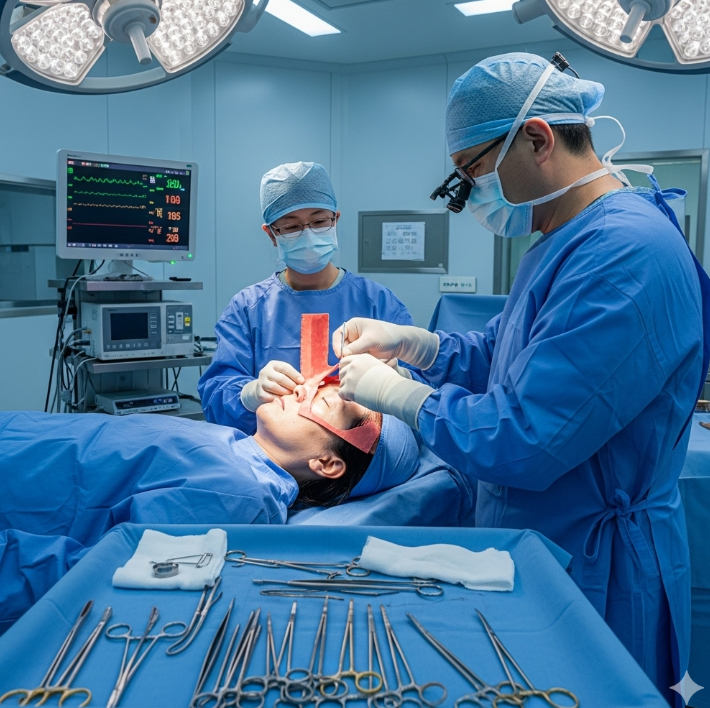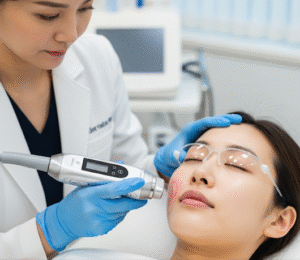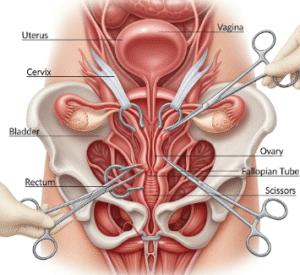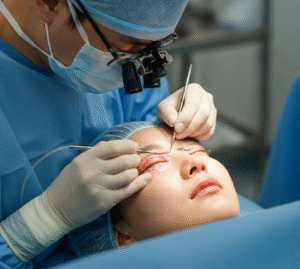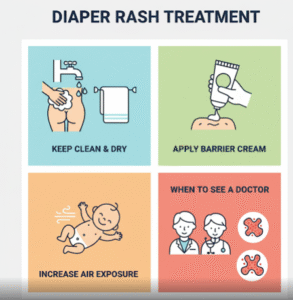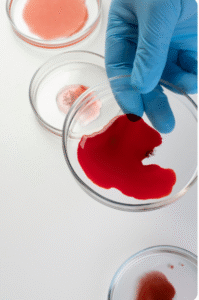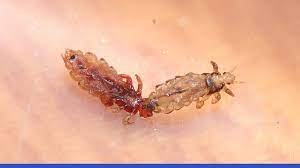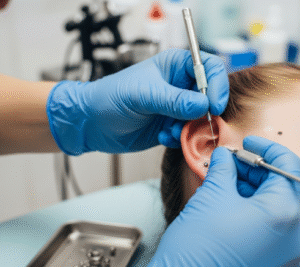What It Is
The paramedian forehead flap is a reconstructive surgical technique used to repair defects of the nose, typically after skin cancer removal, trauma, or other conditions that leave significant tissue loss. It involves taking skin from the forehead, which closely matches nasal skin in color and texture, and transferring it to the nose while keeping its blood supply intact through the supratrochlear artery.
In Korea, paramedian forehead flap reconstruction is performed in specialized plastic and reconstructive surgery centers, where surgeons combine microsurgical expertise with refined cosmetic techniques to restore both function and natural appearance.
Why It’s Done
This surgery is chosen when nasal defects are too large or complex to be repaired with simpler techniques. Reasons include:
- Reconstruction after skin cancer removal (commonly basal cell or squamous cell carcinoma).
- Repair of traumatic nasal injuries.
- Correction of congenital or surgical defects.
- Restoration of nasal shape and airway function.
It is considered one of the most reliable methods for nasal reconstruction because of its excellent blood supply and natural tissue match.
Alternatives
Depending on the defect size and location, alternatives may include:
- Local nasal flaps: Smaller flaps taken from adjacent nasal tissue for minor defects.
- Skin grafts: Less invasive but may not provide as natural a match in texture and color.
- Composite grafts: Involving cartilage and skin for small to medium repairs.
- Prosthetics: Artificial nasal replacements for patients unable to undergo surgery.
For large, deep, or central nasal defects, the paramedian forehead flap remains the gold standard.
Preparation
Preparation typically includes:
- Consultation: Detailed evaluation of nasal defect, overall health, and reconstructive goals.
- Medical evaluation: Blood tests and imaging as needed.
- Oncology coordination: If performed after skin cancer removal, coordination with dermatologists or oncologists is essential.
- Lifestyle changes: Avoiding smoking and alcohol for several weeks before surgery to improve healing.
- Medication review: Pausing blood thinners or supplements that increase bleeding risk.
How It’s Done
The procedure is usually performed under general anesthesia and involves multiple stages:
- Design and marking: The surgeon maps the flap on the forehead based on blood supply.
- Flap elevation: A section of forehead skin with attached blood vessels is carefully lifted.
- Transfer: The flap is rotated and attached to the nasal defect while remaining connected to its blood supply.
- Initial healing period: The flap remains connected to the forehead during initial healing.
- Second-stage surgery: After 2–3 weeks, the flap is divided from the forehead and refined for a natural nasal contour.
Additional minor refinements may follow to perfect the nasal shape.
Recovery
Recovery occurs in stages:
- First stage: Swelling, bruising, and tightness in the forehead and nose are common. Patients must protect the flap to ensure blood flow.
- Second stage: After flap division, sutures are removed, and contour adjustments are made.
- Healing time: Most patients resume light activity within 1–2 weeks, but full healing and cosmetic improvement may take several months.
- Final results: A natural, durable reconstruction that closely matches skin color and texture.
Possible Complications
Although considered reliable, risks include:
- Infection or bleeding.
- Flap failure due to poor blood flow.
- Forehead or nasal scarring.
- Asymmetry or contour irregularities requiring revision.
- Temporary numbness of the forehead.
- Rare complications such as tissue necrosis.
Treatment Options in Korea
Diagnosis
- Detailed consultation with reconstructive surgeons.
- Use of imaging and planning tools to map blood vessels and plan flap design.
Medical Treatments
- Pre- and post-operative antibiotics.
- Pain management and wound care instructions.
Surgical or Advanced Therapies
- Traditional paramedian forehead flap: Standard two-stage reconstruction.
- Three-stage flap technique: For complex or delicate cases requiring staged refinements.
- Combined reconstruction: Forehead flap plus cartilage grafting (from ear or rib) for structural support.
Rehabilitation and Support
- Scar care therapies (silicone gels, laser treatments).
- Revision procedures for fine contouring.
- International patient services including translation, care coordination, and virtual follow-up appointments.

